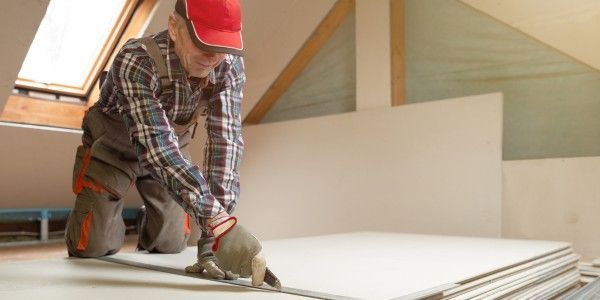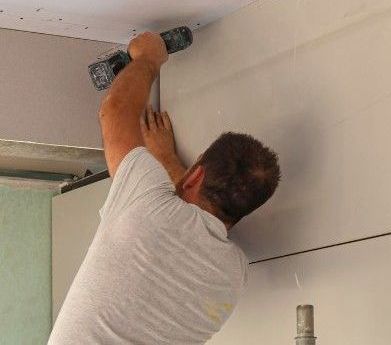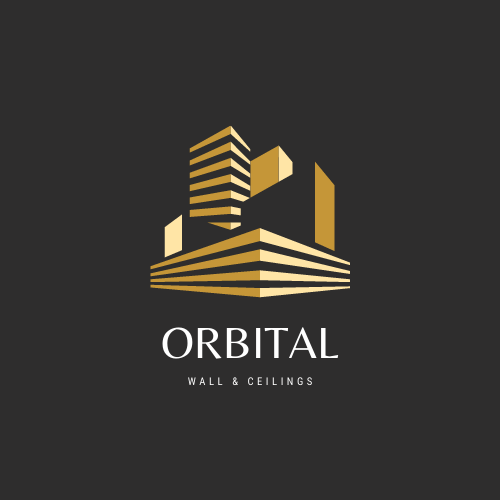Discover the Leading Metal Framing for Drywall
Metal framing systems are essential for drywall installation, providing structural support and ensuring a smooth, even surface. While wood framing is still used, metal framing become popular for its strength, resistance to fire and pests, and long-term durability.
Choose the optimum metal framing for drywall by reading this guide and consulting with the right
metal framers
in your area.
Types of Metal Framing for Drywall
Let's dive into the various types of metal framing components used in drywall construction:
Steel Studs
- Steel studs are vertical metal channels that provide the framework for your walls.
- They come in various sizes and gauges, depending on the load-bearing requirements of your project.
- Lightweight and easy to cut.
- Excellent resistance to fire and pests.
Steel Track
- Steel track, or runner or runner track, is used at the top and bottom of walls to create a secure frame.
- It complements steel studs, and thus, ensuring stability and straightness.
- Available in various sizes to accommodate different wall heights and thicknesses.
- Resistant to corrosion, increasing the lifespan of your framing.
Resilient Channel
- Resilient channels are used to reduce sound transmission between walls and ceilings.
- They provide a spring-like separation between drywall and the framing. This minimizes the transfer of vibrations and noise.
- Effective in soundproofing applications such as home theatres and bedrooms.
- Easily attached to the steel studs or wooden joists using screws.
Metal Furring Channel
- Metal furring channels are horizontal components used in ceiling installations.
- They create a flat and level surface for attaching drywall to the ceiling.
- Lightweight and corrosion-resistant.
- Ideal for suspended ceilings and drop ceilings.
Now that we've explored the different types of metal framing components, let's consider the key factors you should see when choosing the best option for your project.

Considerations When Selecting The Perfect Metal Framing
These factors should be taken into account when choosing the most suitable metal framing for your drywall at home:
Load-Bearing Capacity
Different projects have different load-bearing requirements. Metal studs come in various gauges and sizes, so selecting the appropriate ones for your specific needs is necessary.
Corrosion Resistance
If your project is in a humid environment or an area prone to moisture, consider the corrosion resistance of the metal framing components. Steel components are galvanized or coated to withstand rust, so ensure that you select metal frames that are appropriate for your environmental conditions.
Fire Resistance
Safety is a top priority in construction. Steel framing is inherently fire-resistant, making it a suitable choice for projects where fire safety is a concern. Always check local building codes to ensure compliance with fire safety standards.

Comparing Metal Framing Materials
Your project's particular requirements should be considered while choosing between steel and aluminum frames. This includes budget, load-bearing requirements, and environmental conditions.
Steel vs Aluminum
Regarding drywall components, steel and aluminum are both viable options, each with its unique set of advantages and disadvantages. Your choice should be based on your specific requirements:
| Aspect | Steel Framing | Aluminum Framing |
|---|---|---|
| Strength | High tensile strength, ideal for load-bearing | Lightweight but less load-bearing |
| Weight | Heavier and denser | Lightweight and easy to handle |
| Corrosion Resistance | Requires galvanization or coating for rust | Naturally corrosion-resistant |
| Cost | Generally more affordable | Typically more expensive |
| Fire Resistance | Inherently fire-resistant | Lower fire resistance compared to steel |
Thickness and Gauge
The thickness and gauge of metal framing components are important in their load-bearing capacity and overall durability. Thicker components can bear heavier loads.
| Metal Framing Component | Typical Thickness (inches) | Typical Gauge |
|---|---|---|
| Steel Studs | 0.0185, 0.033, 0.054 | 25, 20, 16 |
| Steel Track | 0.054 | 16 |
| Resilient Channel | 0.0185, 0.033 | 25, 20 |
| Metal Furring Channel | 0.033 | 20 |
Cost
Cost is a significant consideration for any construction project. Steel framing is generally more affordable than aluminum, making it a popular choice for many applications.
| Metal Framing Component | Average Cost (per linear foot) |
|---|---|
| Steel Studs | $1.50 - $3.00 |
| Steel Track | $1.00 - $2.50 |
| Resilient Channel | $0.50 - $1.00 |
| Metal Furring Channel | $1.00 - $2.00 |
Installation Tips
Now that you've selected the appropriate metal framing components for your project, installing them correctly for a stable and durable frame is essential.
Tools and Equipment
Before starting the installation, ensure you have the following tools and equipment on hand:
- Screw gun or drill
- Self-tapping screws or drywall screws
- Measuring tape and level
- Saw or shears for cutting metal framing components
- Safety gear, including gloves and safety glasses
Step-by-Step Installation Guide
Layout and Marking
- Start by measuring and marking the locations for your steel studs, track, or furring channels on the floor and ceiling. Use a chalk line to create reference lines for straight alignment.
Cutting
- Cut the metal framing components to the required lengths using a saw or shears. Ensure they are level and plumb during installation.
Fastening
- Secure the components to the floor, ceiling, and walls using self-tapping screws. Be sure to space them according to your project's specifications.
Additional Bracing
- For load-bearing walls, consider using additional bracing such as bridging or strapping to enhance stability.
Soundproofing
- If soundproofing is a priority, attach resilient channels to the steel studs before adding drywall. This will help reduce noise transmission.
Attach Drywall
- Finally, attach your drywall sheets to the metal framing using drywall screws. Secure the drywall to each metal stud, track, or furring channel.
Finishing
- After the drywall is in place, you can finish the walls and ceilings, whether painting, texturing, or other surface treatments.
Orbital Wall & Ceilings’ Reliable Metal Framers
Metal framing for drywall is a versatile and reliable choice for various construction projects. Whether you're building a residential home, commercial space, or soundproofed room, the right choice of metal framing components can significantly affect the structural integrity and performance of your walls and ceilings.
Following the installation tips can ensure a successful drywall project that meets safety and quality standards. Start your construction project confident you've discovered the best metal framing for your drywall needs.
Take time to consult with the right metal framers or construction professionals. Their expertise and experience can be invaluable in ensuring that your project is structurally sound and tailored to your specific needs and budget. By collaborating with Orbital Wall & Ceilings, you can ensure a successful and durable construction project that stands the test of time. Call us for a free quote.
Frequently Asked Questions
-
What Are the Advantages of Using Metal Framing Over Wood Framing for Drywall?
Metal framing is known for its durability, fire resistance, resistance to termite damage, and straightness. It is also lighter and can be a more cost-effective option for commercial and residential construction.
-
What Are the Most Common Types of Metal Framing Materials for Drywall Construction?
Common materials used for metal framing in drywall construction include steel studs, steel tracks, and metal framing accessories like connectors and fasteners.
-
How Do I Choose the Right Metal Framing System for My Drywall Project?
The choice of metal framing system depends on the project's size, load-bearing requirements, local building codes, and your specific needs. Consulting with a structural engineer or experienced contractor can help you make the right choice.

